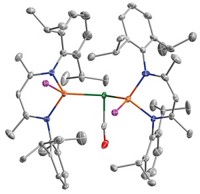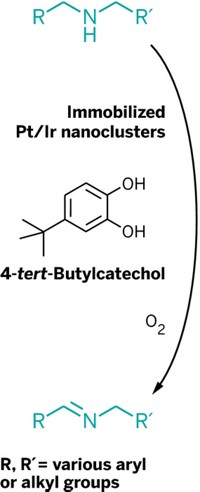Advertisement
Grab your lab coat. Let's get started
Welcome!
Welcome!
Create an account below to get 6 C&EN articles per month, receive newsletters and more - all free.
It seems this is your first time logging in online. Please enter the following information to continue.
As an ACS member you automatically get access to this site. All we need is few more details to create your reading experience.
Not you? Sign in with a different account.
Not you? Sign in with a different account.
ERROR 1
ERROR 1
ERROR 2
ERROR 2
ERROR 2
ERROR 2
ERROR 2
Password and Confirm password must match.
If you have an ACS member number, please enter it here so we can link this account to your membership. (optional)
ERROR 2
ACS values your privacy. By submitting your information, you are gaining access to C&EN and subscribing to our weekly newsletter. We use the information you provide to make your reading experience better, and we will never sell your data to third party members.
Synthesis
Golden Carbonyls Proliferate
ACS Meeting News: Rare complexes could provide new leads for gold-mediated chemical processes
by Stephen K. Ritter
March 29, 2011
| A version of this story appeared in
Volume 89, Issue 14

The number of gold(I) monocarbonyl complexes that chemists have managed to isolate and study has just doubled, thanks to a pair of N-heterocyclic carbene-stabilized compounds created by H. V. Rasika Dias and coworkers at the University of Texas, Arlington. These complexes, described during a Division of Inorganic Chemistry symposium at the American Chemical Society national meeting in Anaheim, are expected to help chemists further investigate reaction intermediates and mechanisms of gold-catalyzed reactions and aid development of new catalysts.
Gold catalyzes several reactions involving carbon monoxide, Dias explains, including the water-gas shift reaction to produce hydrogen from CO and water and the carbonylation of olefins. The first isolable gold monocarbonyl complex, Au(CO)Cl, was reported nearly 90 years ago, he notes. Since then, only Au(CO)Cl and a gold complex with a complex pyrazolylborate ligand made by Dias' group in 1996 have been stable enough to isolate and structurally characterize.
Now, there are two new isolable Au(CO) complexes. Dias and coworkers prepared one from a gold imidazolylidene treated with AgSbF6 and CO; they prepared the other using a reduced form of the ligand (Chem. Commun., DOI: 10.1039/c1cc10622h). Dias notes that his group is also finishing work on the first stable gold carbonyl phosphine complex as well.
Among the complexes' notable features are unusually high C–O infrared stretching frequencies, which are higher than that of free CO. Dias speculates that this property is the result in part of the electrostatic effect of the cationic gold center and a strong σ Au–CO bonding interaction with low π Au–CO back-bonding.
These gold complexes "are remarkable for several reasons," comments Hubert Schmidbaur of Germany's Technical University of Munich, who is an expert in gold chemistry. "The carbenes with their bulky substituents not only provide steric protection of the otherwise highly sensitive Au–C≡O unit, they exert an electronic effect that leads to a surprisingly stable Au–CO bond." These results show once again that N-heterocyclic carbenes perform as "magic ligands" for gold(I), Schmidbaur says; they have recently been used to stabilize elusive complexes containing Au–H, Au–F and Au–OH.
"Gold(I) carbene complexes are a current focus of research in homogeneous catalysis," Schmidbaur adds, "thus the new complexes may become convenient sources for new catalyst systems, because CO can readily and cleanly be displaced by other substrates."
Dias' research with gold and σ-accepting ligands such as N-heterocyclic carbenes is "lovely work," adds John P. Fackler Jr., a gold specialist at Texas A&M University. "This may lead to a much better understanding of epoxide formation, not only propylene oxide with gold, but ethylene oxide with silver."





Join the conversation
Contact the reporter
Submit a Letter to the Editor for publication
Engage with us on Twitter